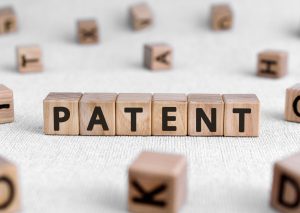 The Madras High Court has upheld a decision made by the Controller of Patents & Designs, which rejected a patent application filed by IIT Madras for a method of doping potassium into ammonium perchlorate. The court’s ruling was based on the fact that the patent application lacked sufficient experimental data to demonstrate the economic significance of the invention, and therefore, failed to meet the requirement for an inventive step under Section 2(1)(ja) of the Patents Act.
The Madras High Court has upheld a decision made by the Controller of Patents & Designs, which rejected a patent application filed by IIT Madras for a method of doping potassium into ammonium perchlorate. The court’s ruling was based on the fact that the patent application lacked sufficient experimental data to demonstrate the economic significance of the invention, and therefore, failed to meet the requirement for an inventive step under Section 2(1)(ja) of the Patents Act.
Facts of the Matter
The Indian Institute of Technology (IIT), Madras, filed a patent application titled “Method of Doping Potassium into Ammonium Perchlorate”. Initially, the First Examination Report (FER) issued on October 1, 2018, raised objections based on prior art document D1, stating that the claimed invention lacked novelty, was not inventive, and was not eligible for patent protection under Section 3(d) of the Patents Act, 1970. The applicant responded to the FER by amending the complete specification on April 1, 2019. Despite this, the hearing notice maintained objections under Sections 2(1)(ja) and 3(d) of the Patents Act. During the physical hearing, the applicant made oral submissions and filed written submissions with revised claims. Ultimately, the impugned order was passed on April 20, 2020, rejecting the application under Sections 2(1)(ja), 3(d), and 3(a) of the Patents Act, prompting the filing of this appeal.
Arguments
The invention pertains to a method of incorporating potassium into ammonium perchlorate (AP) to enhance the burning rates of solid propellants used in defence and space applications. The appellant claimed that when potassium is added to ammonium perchlorate through a recrystallisation process, it alters the latter’s thermal properties and results in an incremental increase in the solid propellant’s burning rates. The appellant maintained that the inventive aspect of the claimed invention lies in eliminating the use of external reagents by utilising the filtrate material, such as stainless steel sieve, cotton cloth, or filter paper, to dope varying percentages of potassium into AP, thereby producing recrystallised AP doped with potassium (RAP) with enhanced thermal properties.
The appellant also argued that the rejection under Section 3(a) was not justified as it was first raised in the impugned order, and they were not given the opportunity to respond to this specific objection, thereby denying them a fair chance to address the concern.
The High Court’s Findings
The court concurred with the appellant’s assessment that the objection based on the invention being frivolous was apparent, as it was first raised in the impugned order. The court observed that since the appellant was not afforded the opportunity to respond to this specific objection, the principles of natural justice and the objectives of the Act were contravened.
Regarding the rejection under Section 3(d) of the Patents Act, wherein the Controller initially acknowledged the novelty of the invention but ultimately deemed it ineligible for patent protection under Section 3(d) due to its process nature, the court specifically highlighted three exclusions under Section 3(d) and concluded that only exclusion (c) is applicable, given the process claim in question. The court observed that the product resulting from the claimed invention is not novel but rather a variation of a product already described in D1. Moreover, the court emphasised that for a substance to be considered a reactant, it must initiate or cause a chemical reaction to form a new compound. Consequently, the court concluded that the filtrate material cannot be regarded as a reactant. The claimed invention involves a series of known processes, including dissolution, filtration, heating, drying, and reheating. Since no new reactant was employed and the known processes do not yield a new product, the claimed invention falls outside the scope of patentability under Section 3(d) of the Patents Act due to its lack of novelty and inventive step.
In addition, the court examined the claimed invention’s inventive step, highlighting that it must meet two crucial criteria to pass this test: (i) it must demonstrate technical advancement or economic significance in the industry, or both, compared to existing knowledge; and (ii) the purported technical advance must not be obvious to a person skilled in the art. The court concluded that without any empirical data to compare the costs of using filtrate material, which requires frequent replacement, with using an external reagent, the economic significance of the claimed invention could not be established. As a result, the claimed invention failed to meet the inventive step requirement under Section 2(1)(ja) of the Patents Act. The court also concluded that the claimed invention passed the test of being capable of industrial applicability.
Upholding the rejection of the patent application, the court held that the Controller’s decision to reject the application under Section 3(a) and on industrial applicability under Section 2(1)(j) was not maintainable, whereas the rejection based on Sections 3(d) and 2(1)(ja) was maintained.
Authors: Manisha Singh and Shilpa Priyadarsini
First Published by: Lexology here



